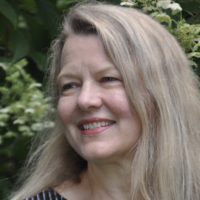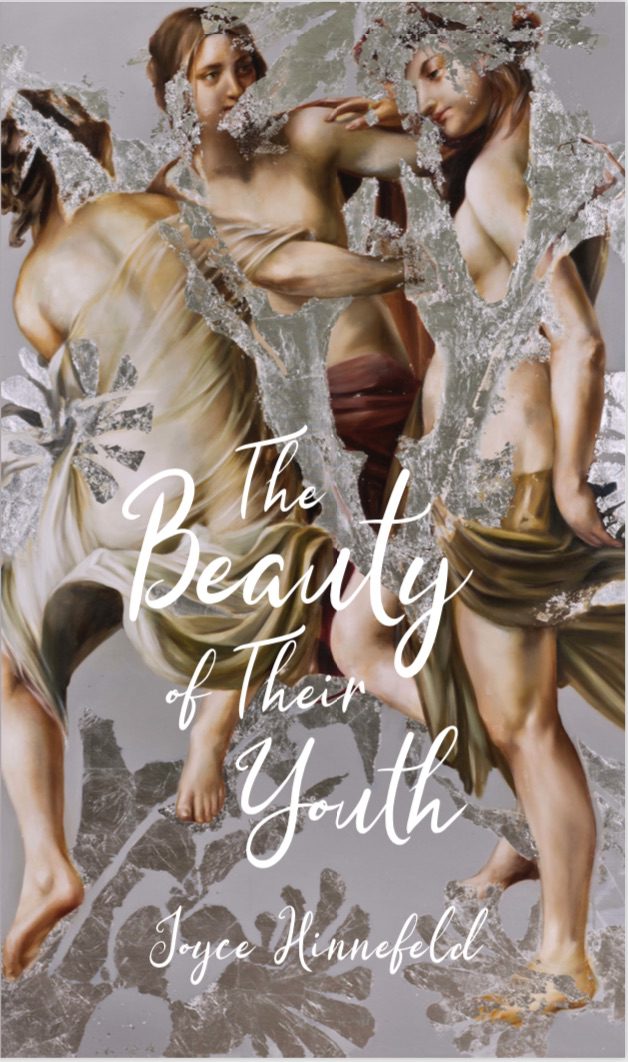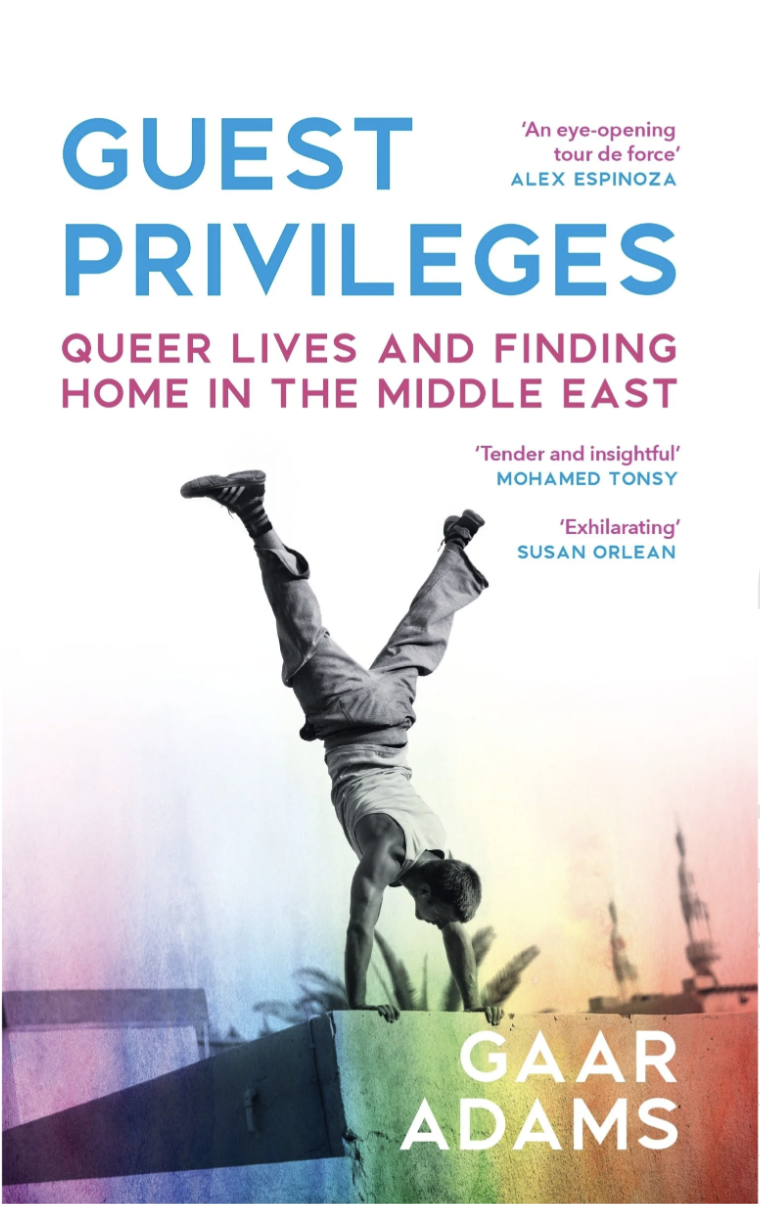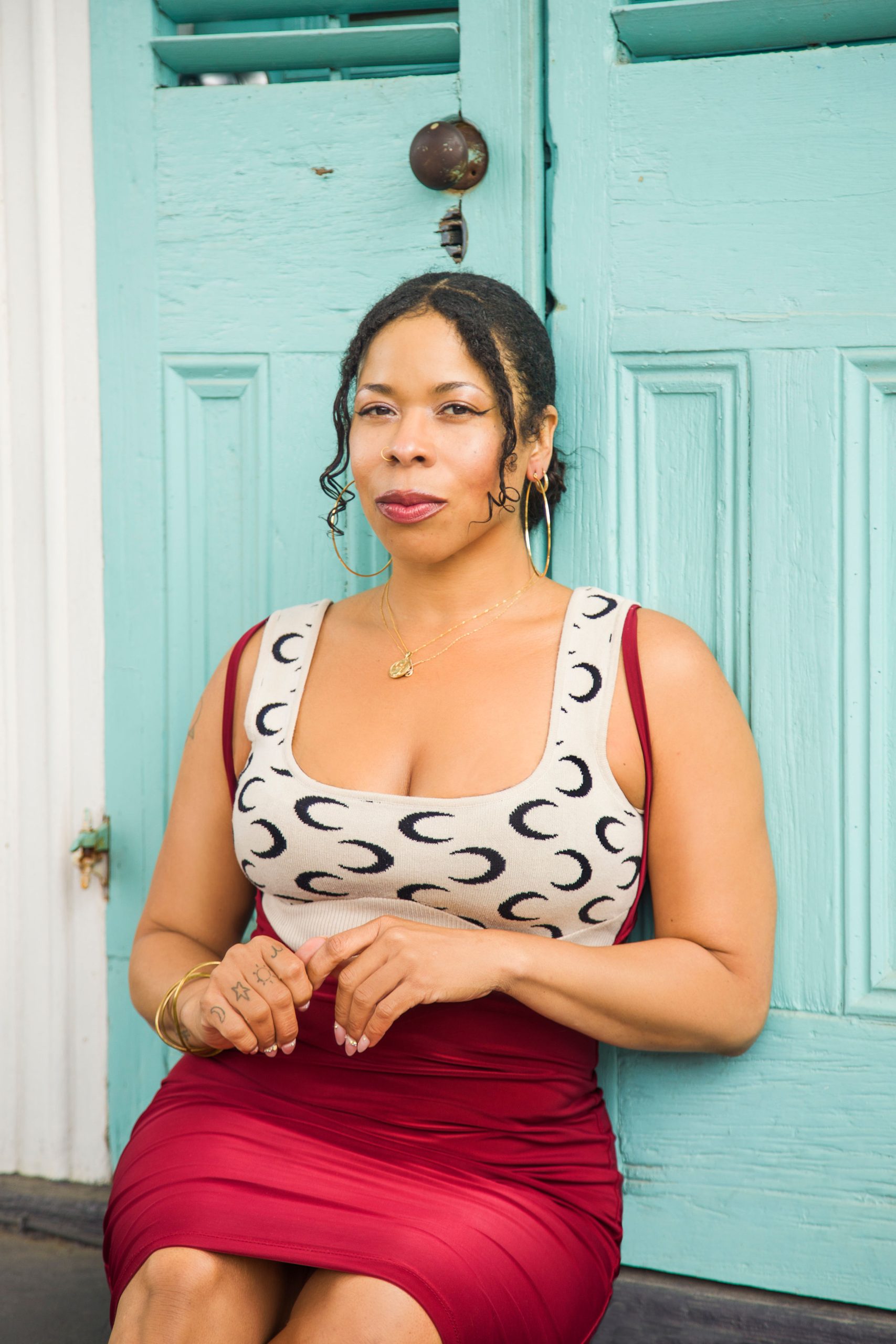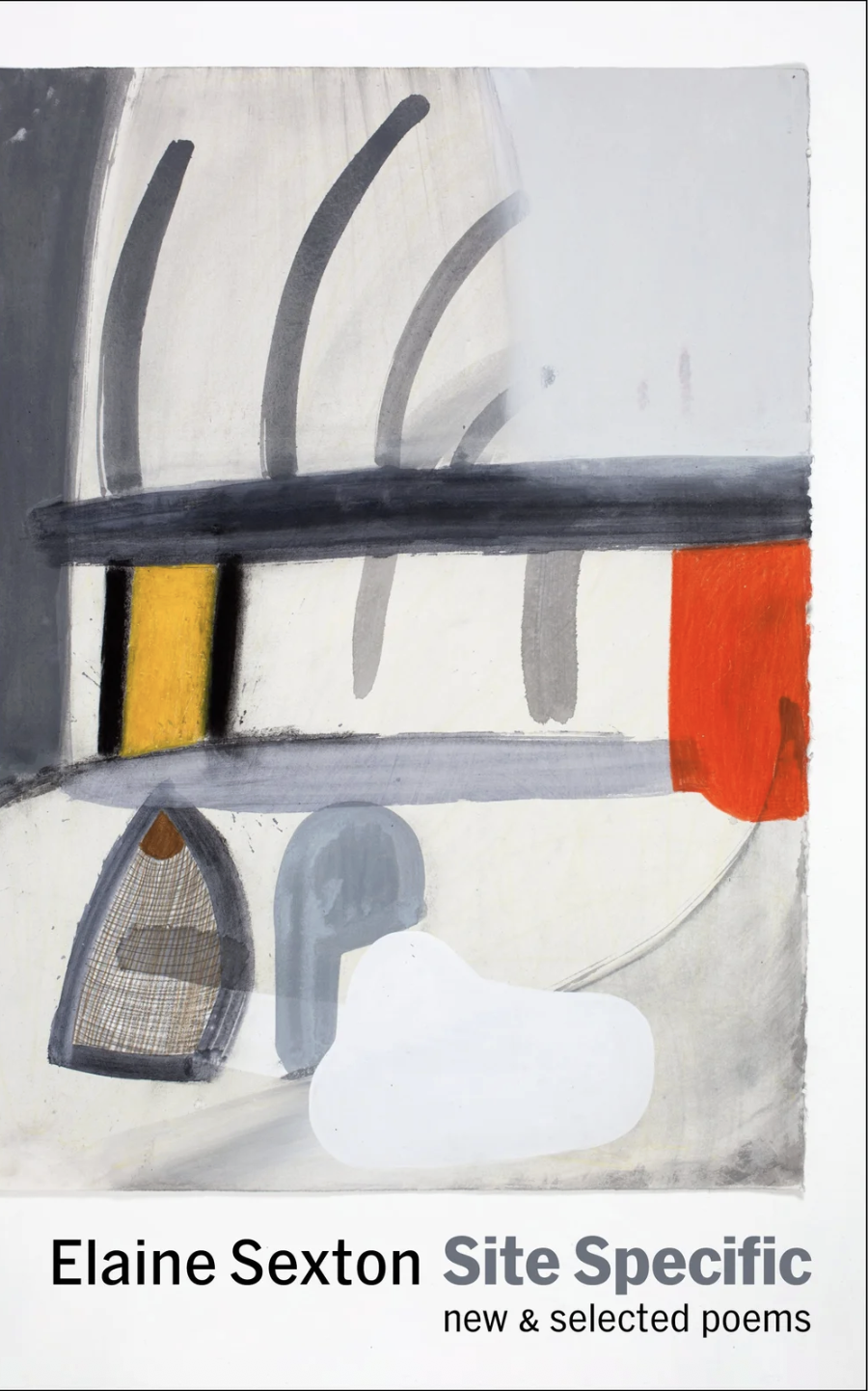Joyce Hinnefeld and I met in Pennsylvania, when we were both teaching college there, and we would often discuss writing, politics, and life. I have long admired the power, grace, and intelligence of her work.
Hinnefeld is the author of the short story collection The Beauty of Their Youth, released last month as part of the Wolfson Press American Storytellers series. Her first novel, In Hovering Flight, was a #1 Indie Next Pick. She is also the author of the novel Stranger Here Below, and the short story collection Tell Me Everything and Other Stories (winner of the 1997 Bread Loaf Writers’ Conference Bakeless Prize in Fiction). She is a Professor of English at Moravian College in Bethlehem, PA.
I was grateful to have the chance to talk with Joyce recently about her new story collection, the difference between reflective and restorative nostalgia, pre-internet innocence, and the luxurious disorientation of travel.
***
The Rumpus: Your story “A Better Law of Gravity” picks up Frankie from Carson McCullers’s The Member of the Wedding five years later, the summer after her first year of college. What is the pull of college, as a stage of life—what do you see as its possibilities as a fictional space?
Joyce Hinnefeld: You’re right that I’m drawn to that time and that age, but it’s something I wasn’t really conscious of until I looked closely at the stories that the Wolfson Press crew chose for The Beauty of Their Youth. The experience of college is key in “A Better Law of Gravity,” but also in the title story, where the middle-aged central character, Fran, is drawn back to her own college years by a visit with people she knew as an American student abroad in the 1980s. College plays a smaller, different, but still significant role in “Polymorphous,” whose central character, Joan, is a bit self-conscious about her years as a “non-traditional” college student. (And also still bothered by the phrase “polymorphous perversity,” which she encountered in an essay about Freud that she read for one of her classes.)
Rumpus: Was college formative for you, and is that a well you’re drawing from?
Hinnefeld: College was a pretty momentous break-from-the-past experience for me, even though I attended a small liberal arts college in southern Indiana—Hanover College—that was only about an hour away from the tiny farm town where I grew up. Hanover was founded by nineteenth-century Presbyterians; it has a beautiful campus on a hill above the Ohio River, with Georgian architecture that’s modeled on the University of Virginia. So there was that—the picture-book setting—but I was also just transformed by courses in philosophy and literature and psychology and more, all taught by a really wonderful faculty. I’ve been a poster child for the liberal arts ever since.
Of course I’m also aware that not everyone experiences college in that way, if they experience college at all. I’ve taught in some pretty varied settings through the years, and that’s where I got Frankie/FJ’s dream of college as a place where she would walk “over lush green lawns and into ivy-covered buildings, to hear scintillating lectures about Michelangelo and Tennyson” and her subsequent discovery that in fact “the buildings were new and the desks were scratched with graffiti and she walked from right to left over hot concrete most of the time.” (The dried-out washcloth that FJ keeps recalling in that story, by the way, comes from a distinct memory of my oldest brother’s dorm room at Indiana University—also a beautiful campus, but a very different world from the small school I attended.)
I’m clearly still drawn to my own college experience, to how transformational it was, but also—retrospectively—how innocent and naïve. I’m intrigued by that age and experience for young women particularly, probably because I spend so much time with college students, and also, now, because I have a college-age daughter.
Rumpus: A lot of people are very nostalgic for their college days, I think, and perhaps that creates a layering of perception that’s part of the richness of that setting in fiction, too. Your title story “The Beauty of Their Youth” is an encounter with nostalgia and its complexities, how it comes out of and also creates a sense of displacement for the characters. The present is a sort of exile from the past. Were you thinking about nostalgia when you wrote it?
Hinnefeld: I recently discovered Svetlana Boym’s work on nostalgia, initially by reading her Atlas of Transformation article on “nostalgia” online. I’d been trying to understand a strain of something that was, I knew, showing up in so much of my work. I knew nostalgia was probably the right word for this mood, this motivation behind so much of what I was choosing to read and write. But I didn’t want it to be. Because in the age of Trump, nostalgia feels like a dirty word to me.
So, discovering Svetlana Boym was a tonic—particularly her distinction between “restorative” and “reflective” nostalgia: “Restorative nostalgia does not think of itself as nostalgia, but rather as truth and tradition. Reflective nostalgia dwells on the ambivalences of human longing and belonging and does not shy away from the contradictions of modernity. Restorative nostalgia protects the absolute truth, while reflective nostalgia calls it into doubt.”
Rumpus: What does it mean for nostalgia to call the truth into doubt?
Hinnefeld: As a term created by a seventeenth-century Swiss medical student to provide a medical diagnosis for “homesickness”—especially the homesickness of soldiers—nostalgia has, in my mind, a kind of ridiculous provenance. And yet it captures something that so many of us feel, and that Boym (and others) have characterized as “a disease of the modern age.” We’re sick for home, or for the past—but for a home, and a past that never actually existed. What’s been striking about revisiting the stories selected for The Beauty of Their Youth is not just the nostalgic tone of the title story; it’s the pang of nostalgia I feel for the period when I wrote most of these stories: roughly 1999 to 2011. Which, for lack of a better way of describing it, I’ve been calling my nostalgia for life before the internet.
Rumpus: What does life before the internet mean to you, as a writer?
Hinnefeld: The internet was alive and well when I wrote these stories. But it’s refreshingly absent from the stories themselves—except for the title story, which touches on our obsessive curating of the lives we present on social media—and that’s because the internet could be absent from a story, up until around 2010. By the time I was writing the title story though, that pre-internet innocence just wasn’t possible.
Rumpus: That term, “innocence,” says so much about the vulnerability we feel now on social media. And there’s a difference between people who remember life as it was before, and younger people who have no basis for comparison.
Hinnefeld: I don’t think it’s accidental that “The Beauty of Their Youth” is the story that displays nostalgia most vividly. In that story I’m definitely giving the character of Fran a lot of my middle-aged preoccupations: the daughter who’s growing up and apart from her mother, along with the realization that the past (both Fran’s and her friends’ personal pasts, and the ancient cultures she’s studied and taught for years) is not as simple or innocent as she’d let herself believe. But the anxieties I associate with the ever-present online world are also present in this story—in, for example, the question that occurs to Fran early in the story (“Did Facebook somehow make you think you would never be truly old?”) and then her acknowledgment, near the end, that there are simply “things you didn’t post.”
To the extent that other characters in the stories in this collection are “nostalgic,” I suppose it’s in a similar way. That is, characters like Joan in “Polymorphous’’ and the painter Van Lloyd in “Benedicta’’ are, by the ends of those stories, up against a recognition of all they’d refused to see, both about people they’ve loved and about themselves. Theirs is a reflective, not a restorative, nostalgia, in Boym’s terms. At least I hope that’s how readers will perceive them.
Rumpus: Boym’s interest in nostalgia is rooted in her own experience of immigration and exile, which seem like the central stories of our time. Displacement manifests in a lot of your stories, whether it’s the German tourist who decides to stay in Florida in “Everglades City” or the characters who decide to make their home in a small Pennsylvania town in “Polymorphous.” What is it about this kind of movement that interests you in storytelling?
Hinnefeld: “Everglades City” is the earliest story in this collection by far—and to be honest, I’ve had a little trouble remembering certain details about it. But here are things I know for sure: I traveled to the Florida Everglades at some point in the 1990s, and stayed for a while in Everglades City. There were a lot of German tourists in the Everglades at that point—and that was also not long after a period of time when several German tourists had been shot and killed in Florida. There were gun stores everywhere, and incredulousness, elsewhere in the world, about the ready availability of guns in the US (this part is timeless, it seems). Also, I’d known a number of young people from Germany in the 80s and 90s—including two high school-aged brothers who stayed with my husband and me, attending high school in the US for a semester, at two different points in the late 90s. All those things together led me to Inge, the young woman at the center of “Everglades City” who is loathe to return to her narrowly prescribed life in Germany, but also baffled by life in the US, especially in Florida. (There was also a guy I knew in Florida in the late 80s—not an alligator handler, but I guess you could say there were certain similarities—but that’s a story for another time.)
Rumpus: It sounds like a lot of different ingredients all coalescence into one story.
Hinnefeld: “Everglades City” was one of my first attempts to recreate the disorientation of travel through the eyes of a fictional character; you can see that happening again in “The Beauty of Their Youth.” So it’s a luxurious sort of displacement that I’m writing about in these cases—the voluntary displacement of a tourist. I guess there’s also migration, in a sense, in the movement of New Yorkers to rural Bucks County, Pennsylvania in “Polymorphous”; certainly Joan and her fellow life-long Pennsylvanians view these late arrivals as “migrants” of a sort. I suppose I felt like one of those privileged migrants from the city, too, during the brief period when my husband and I lived in a restored mill in the countryside just north of Bucks County. And I guess I’ve also always seen myself as a sort of refugee from the rural Midwest—even now, a good thirty years after I moved east. That’s a problematic conception for lots of reasons, particularly in an age of forced migration and refugees whose lives have been shaped by trauma and desperation (and also an age of oversimplified notions about the rural Midwest).
In this context I think of Mohsin Hamid, writing in National Geographic that “in the twenty-first century, we are all migrants.” This is true, Hamid says, in the sense that we are all traveling through time; there’s no avoiding that. We’re all on the same path to middle age (though I actually landed there some time ago) and then to the things that, we all know, come after that. It’s a desperate need to deny this particular movement, I think, that fuels the stubborn, simplistic (“restorative”) nostalgia of Trump and his MAGA tribe. But I also think of Hamid’s novel Exit West, which I taught last fall (and which my students loved), and how he so deftly handles the perilous realities of global migration in that book. He does not avoid the painful realities of today’s violent and increasingly ravaged world, and yet the book takes such fascinating and unexpected turns (which I won’t spoil for those who haven’t read it) that he also manages not to traffic in what people have begun to call “trauma porn.” It’s so beautifully and deftly done.
Hamid and others are writing powerful work about the realities of migration, and the profound displacements of our time. But if my stories can help a reader recognize the inevitable displacements and uncertainties of all of our contemporary lives—the undeniable truth that a permanent and untouched “home,” if there ever was such a thing, is a rapidly dissolving myth—that will please me. I like to think of my fiction as engaging with questions of displacement and migration in that way.
Rumpus: It’s interesting to think about these stories being written over a long period of time and now being collected into a single book. Do you find seeing them together makes them speak to one another in ways you hadn’t anticipated?
Hinnefeld: Absolutely. And I’m grateful to Joe Chaney, the American Storytellers Series Editor at Wolfson Press, who oversaw the selection and organizing of these stories, for recognizing the ways in which they share certain preoccupations about time and memory. In his introduction to the collection, Joe characterizes my fiction (novels included) as making the case “that mistaken perceptions and misguided decisions, rather than tragic flaws that must destroy us, are inextricably part of the ordinary texture of our lives—not foreign or ultimately even ‘wrong,’ but intimately at home among the characteristic peculiarities that define our humanity.” I’m grateful for that characterization of the work, and for Joe’s recognition of this connection. His perceptiveness as an editor has made the process of compiling a brief yet expansive (in terms of time) collection like this one a real pleasure. It turns out that I’ve been thinking about these things for a long time, even since well before I hit middle age!
Rumpus: You write both short stories and novels. Does one form feel more like home to you than the other? Are you a different writer in each, or is it more continuous?
Hinnefeld: Honestly I thought I’d come to feel more at home with writing novels, but in the last ten years or so I’ve come to question that; this is actually something I’m thinking about a lot, and also trying to write about. I have a lot of questions now about writing fiction about the past, as I did in my novel Stranger Here Below and, to some degree, in my novel In Hovering Flight. But I’ve also struggled, in recent years, to capture our contemporary moment in the kind of realistic literary novel I prefer to read and write. That may be why I’ve found myself returning to short stories recently—though what I’m working on now is a series of linked stories, and so maybe I’m not moving that far away from the novel after all.
I want to try to phrase this in a way that doesn’t sound grandiose, but I think I’m coming to recognize that I need a form that allows for both small moments (the “single effect” of a short story maybe) and the inextricable nature of all of our lives—socially, economically, ecologically, and more. I spend an awful lot of time thinking about imperialism these days (this is what I mean about perhaps sounding grandiose), about the ways in which our current climate and political crises, for instance, can be seen as the inevitable outcome of empire. What can you do, as a human being, with the fact of being trapped in such a cycle? I’m interested in contemporary characters who are up against that question, and for some reason even a novel doesn’t feel like a big enough form for that. But I’m beginning to think that short stories linked by familial ties, settings, and brushes with historical and literary figures might work.
***
Photograph of Joyce Hinnefeld by Jim Hauser.
